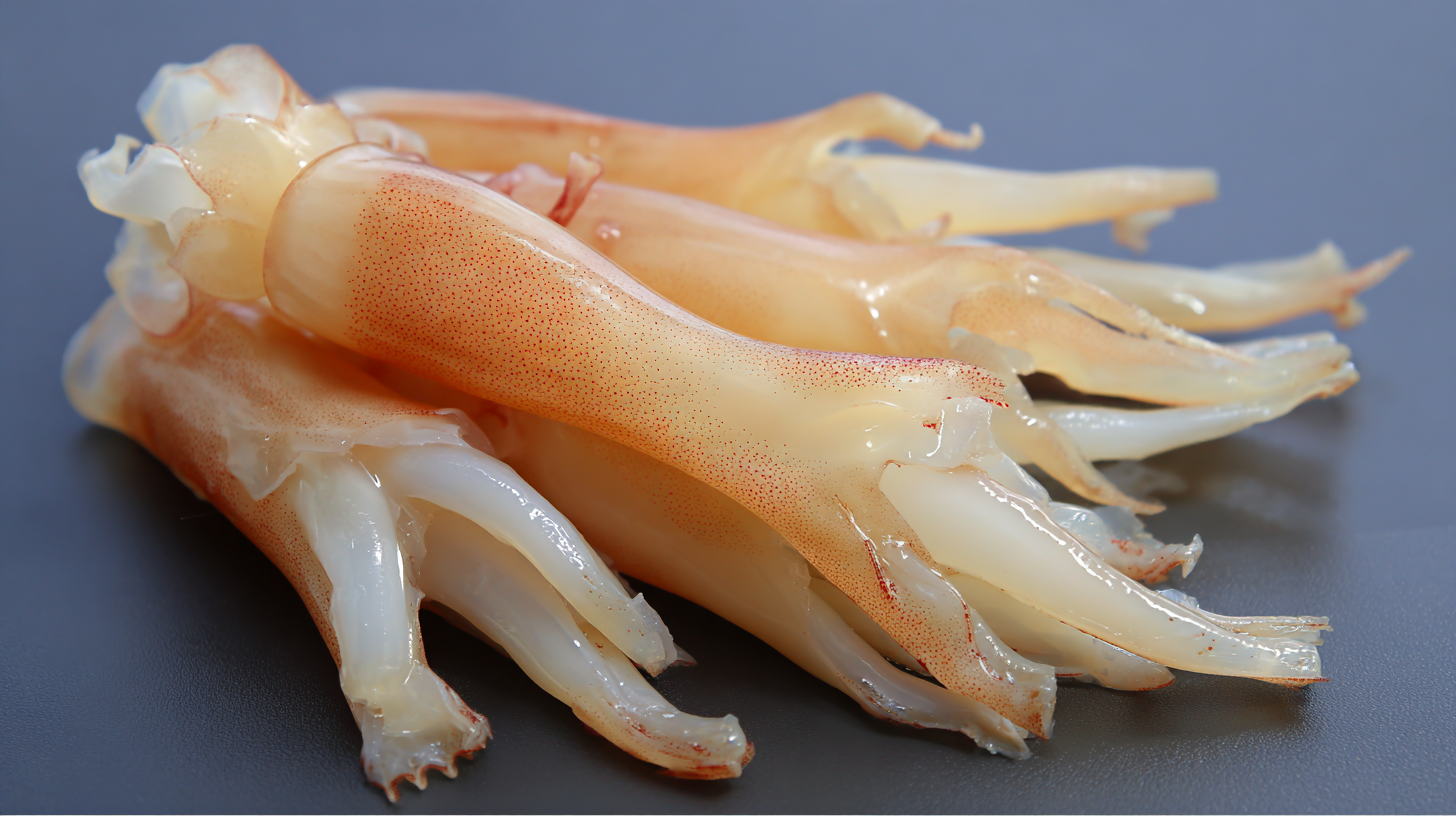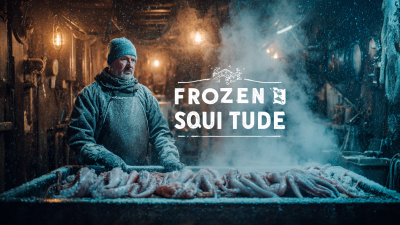As the global seafood market continues to evolve, the demand for Frozen Squid Fillet is poised for significant growth, particularly in the context of the 2025 China 138th Canton Fair. According to a recent report by the Food and Agricultural Organization (FAO), the consumption of squid and other cephalopods has been on an upward trajectory, with a noted increase of 10% in global trade over the past five years. Additionally, data from the China Seafood Market Report indicates that the import of frozen seafood, including squid, is expected to rise by 15% by 2025, largely driven by changing consumer preferences towards convenient and high-protein food options. The 138th Canton Fair will serve as a pivotal platform for suppliers and buyers to explore emerging market trends and forge connections within the industry, highlighting the significance of Frozen Squid Fillet as a key product in the evolving seafood landscape.

The demand for frozen squid fillet is anticipated to witness significant growth during the 2025 China 138th Canton Fair, driven largely by evolving consumer preferences. As health-conscious eating habits continue to rise, consumers are increasingly seeking high-protein, low-fat food options, making frozen squid a popular choice. The convenience of ready-to-cook frozen squid fillets appeals to busy urban consumers looking for quick meal solutions that do not compromise on nutrition or taste.
Moreover, sustainability has emerged as a critical factor influencing purchasing decisions. Consumers are now more aware of the environmental impact of their food choices and prefer products sourced from sustainable fisheries. Marketing initiatives at the Canton Fair will likely focus on highlighting the quality and responsible sourcing of frozen squid fillets, catering to an audience that prioritizes ethical consumption. As these trends unfold, suppliers at the fair must adapt to these evolving preferences to effectively tap into the burgeoning market for frozen seafood products.
The demand for frozen squid fillets is experiencing notable shifts as we approach the 2025 China 138th Canton Fair, driven by various market dynamics. The increasing popularity of seafood as a healthy alternative to traditional meat products has spurred consumer interest in frozen squid fillets. With rising health consciousness among consumers, coupled with a growing culinary trend towards Asian-inspired cuisine, the market for frozen squid is expanding rapidly.
Additionally, supply chain innovations and improved freezing technology are enhancing the freshness and quality of frozen squid fillets, making them more appealing to retailers and consumers alike. E-commerce platforms are also playing a significant role in boosting demand, as they provide easier access to a diverse range of frozen seafood products. Market players are investing in strategic marketing campaigns to highlight the nutritional benefits and convenience of frozen squid fillets, further influencing purchasing decisions. As these factors converge, the frozen squid fillet market is set to experience robust growth leading up to the Canton Fair in 2025.
| Region | 2025 Demand (Metric Tons) | Growth Rate (%) | Average Price (USD/kg) | Key Influencing Factors |
|---|---|---|---|---|
| East China | 15,000 | 5% | 10.50 | Increased health consciousness, culinary trends |
| South China | 12,000 | 6% | 11.00 | Higher disposable incomes, urbanization |
| North China | 10,000 | 4% | 9.75 | Exposure to new cuisines, restaurant growth |
| Central China | 8,000 | 3% | 9.00 | Population growth, seafood awareness initiatives |
| Southwest China | 6,000 | 7% | 10.25 | Tourism impact, enhanced distribution channels |
The frozen seafood sector is poised for significant growth leading up to the 2025 Canton Fair, particularly in response to shifting consumer preferences and market dynamics. The global frozen foods market, currently valued at USD 284.2 billion in 2023, is anticipated to reach USD 363.7 billion by 2028, reflecting a compound annual growth rate (CAGR) of 5.1%. Within this framework, the frozen seafood market, valued at USD 63.5 billion in 2024, is projected to expand to USD 107.4 billion by 2034 at a steady CAGR of 5.4%. This growth trajectory indicates a robust demand for frozen seafood products, propelled by factors such as perishability and price competitiveness.

Key players in the frozen seafood sector are adapting their strategies to capitalize on these emerging trends. With a growing emphasis on sustainability, industry leaders are increasingly focusing on minimizing food waste by advocating for frozen options as a strategic solution in the HoReCa (Hotel, Restaurant, and Café) segment. Moreover, technological advancements are being leveraged to navigate food supply chain challenges, addressing the staggering 30% of food lost or wasted annually. As the market continues to evolve, companies must remain agile and innovative to capture consumer interest and drive profitability in an increasingly competitive landscape.
The demand for frozen squid fillets is experiencing a notable shift towards sustainability, particularly evident at the 2025 China 138th Canton Fair. As consumers become more environmentally conscious, companies are adopting sustainable sourcing practices to meet this growing demand. According to the Seafood Sustainability Forum, approximately 63% of consumers globally are inclined to purchase seafood products that are certified as sustainable. This trend is pushing suppliers to align their harvest methods with eco-friendly practices to appeal to a more conscientious market.
Moreover, the rise of certifications such as the Marine Stewardship Council (MSC) and the Aquaculture Stewardship Council (ASC) indicates that sustainability is becoming a pivotal criterion in purchasing decisions. Research from the Global Seafood Alliance highlights that sales of sustainable seafood were projected to exceed $100 billion by 2025, reflecting a significant market transformation. As we approach the Canton Fair, frozen squid fillet vendors are encouraged to showcase their commitment to sustainable sourcing, thereby enhancing their competitive edge in an evolving marketplace.
As the 2025 China 138th Canton Fair approaches, the demand for frozen squid fillet is witnessing remarkable growth, driven by innovations in packaging and distribution technologies. According to a recent market analysis by Mordor Intelligence, the global seafood packaging market is expected to reach USD 30 billion by 2025, reflecting a compound annual growth rate (CAGR) of over 4%. This increase is attributed to advancements in modified atmosphere packaging (MAP) and vacuum preservation techniques that enhance the shelf life of frozen seafood products, thus appealing to both retailers and consumers.
In addition to packaging innovations, the distribution channels for frozen seafood are evolving rapidly. The rise of e-commerce platforms and cold chain logistics solutions has significantly expanded market reach. A report from Grand View Research indicates that the cold chain market for seafood is projected to grow at a CAGR of 8.5% from 2022 to 2030. Enhanced logistical capabilities ensure that frozen squid fillet reaches consumers while maintaining quality, driving up consumer confidence and paving the way for increased sales at major trade events like the Canton Fair.







